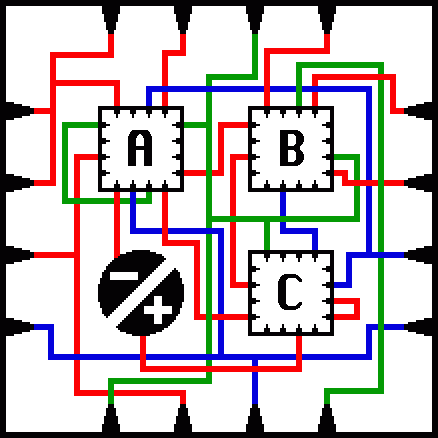My previous post, “Solving fractal mazes” is a prerequisite to this one. Fair warning, this will be long and dense.
Fractal mazes contain infinite paths, but the only solutions permitted are finite. Some people find that disappointing. What’s the point of all that extra maze if we don’t get to traverse it? So my goal is to come up with a variant ruleset for fractal mazes that permits and formalizes infinite solutions. In fact, I will propose two distinct rulesets, provocatively titled Countably Infinite Fractal Mazes and Cantor Fractal Mazes.


